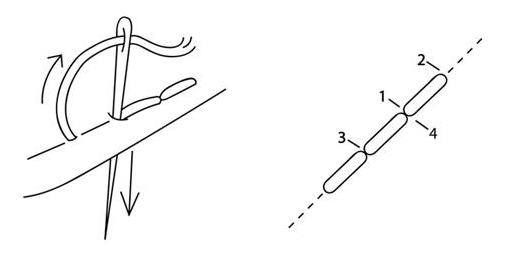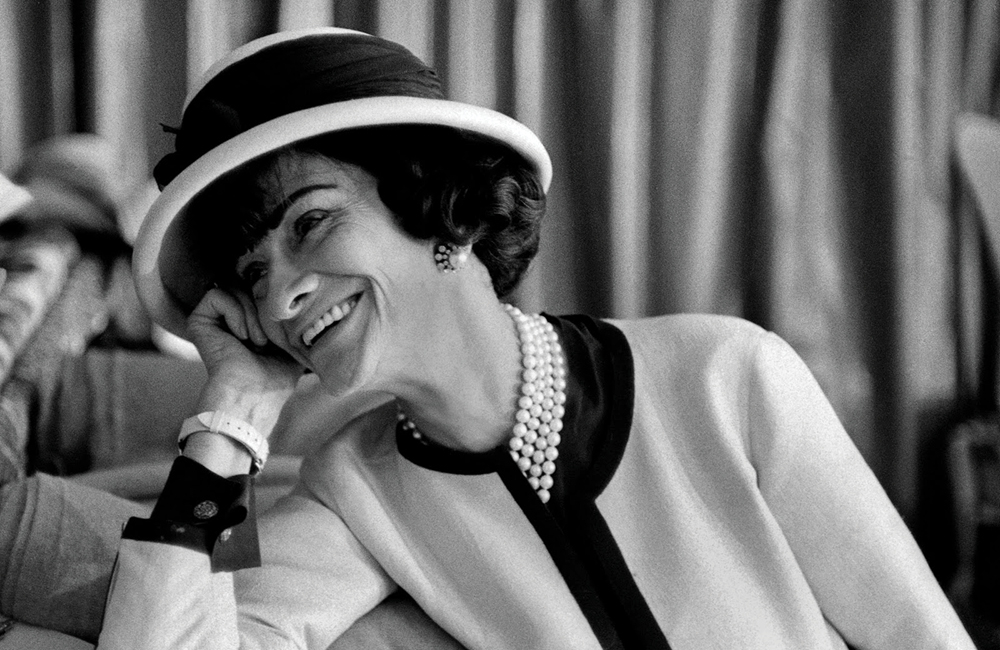Blog / Hand Sewing Hats

Hand Sewing Hats
5 Good Stitches for Hand Sewing Hats
A basic skill that all couture milliners should know is hand sewing. Hand sewing your designs will set your work apart from mass manufactured imports. It is also required for attaching items to your hats, such as trims and combs. When hand sewing hats, it is important to be able to sew a clean, even stitch and to know which stitch to use when. Where or what you are stitching will also influence your needle choice.
Here are 5 stitches that are commonly used for hand sewing hats…
1) Stab Stitch
The most basic stitch is the Stab Stitch. The needle is “stabbed” at right angles through the materials. This stitch is used for sewing thick layers of fabric together, or sewing through felt or straw. A sturdy long or Straw needle will work best with this stitch, as it will stand up to the thickness of the material.
2) Basting or Running Stitch
A Basting or Running Stitch is a useful stitch for temporarily holding fabric layers together before final sewing. It is best to use a contrasting thread and not to pull stitches tight for easier removal. This stitch can be useful for tacking fabric to a crown, attaching a binding around a wired edge, or for gathering. This stitch may also be sewn at a diagonal, especially if sewing materials together while still on a hat block.
3) Wire Stitch
One of the most common hat making stitches is used to sew a wire to the edge of a brim or headband. This stitch is very similar to a Buttonhole or Blanket Stitch. A blanket stitch is often used to finish edges of straw, felt or leather as a decorative stitch. To attach wire to a brim edge, stab the needle through then bring it back over the wire (but under the loop of thread). Run about every centimeter to secure the wire along the fabric edge.

4) Backstitch
The Backstitch is the strongest hand stitch and resembles a machine stitch when sewn evenly. By doubling back on itself, the stitch forms a continuous line. This stitch is useful for a more secure bond, or where your stitching may be showing. There is also an Open Backstitch which is sewn with the top stitch smaller than the stitch on the underside. This is used for sewing crowns to brims, as it has a little more give.

5) Slip Stitch
A Slip Stitch is an invisible finishing stitch for joining fabrics on the right side, or sewing fabric bindings on the edge of brims. The fabric must be folded, pinned, and lightly pressed before sewing for a clean join. The needle goes through the fold for a long stitch then picks up a very small amount of the material with a small stitch. The small stitch is what shows on the right side.
These are some of the most common stitches for hand sewing hats, but you may come across a situation or material that requires other techniques, like the special starting and finishing stitches used when sewing sinamay. Hand sewing can set your work apart, and it is worth the time and effort to get proficient at it. It will make your work more clean, secure and of higher value. Your clients will appreciate the personal touch and skill it takes, so be sure to tell them about all your hard work when selling those hand sewn hats!

About the Author
Amy Fowler is the creator of the bespoke, California-based Millinery by Amy Fowler label. She also runs Humboldt Haberdashery, an online millinery supplier.
See Amy’s full bio HERE.
Popular Articles
Latest e-Magazine
Featured Supplier

Hand Sewing Hats
5 Good Stitches for Hand Sewing Hats
A basic skill that all couture milliners should know is hand sewing. Hand sewing your designs will set your work apart from mass manufactured imports. It is also required for attaching items to your hats, such as trims and combs. When hand sewing hats, it is important to be able to sew a clean, even stitch and to know which stitch to use when. Where or what you are stitching will also influence your needle choice.
Here are 5 stitches that are commonly used for hand sewing hats…
1) Stab Stitch
The most basic stitch is the Stab Stitch. The needle is “stabbed” at right angles through the materials. This stitch is used for sewing thick layers of fabric together, or sewing through felt or straw. A sturdy long or Straw needle will work best with this stitch, as it will stand up to the thickness of the material.
2) Basting or Running Stitch
A Basting or Running Stitch is a useful stitch for temporarily holding fabric layers together before final sewing. It is best to use a contrasting thread and not to pull stitches tight for easier removal. This stitch can be useful for tacking fabric to a crown, attaching a binding around a wired edge, or for gathering. This stitch may also be sewn at a diagonal, especially if sewing materials together while still on a hat block.
3) Wire Stitch
One of the most common hat making stitches is used to sew a wire to the edge of a brim or headband. This stitch is very similar to a Buttonhole or Blanket Stitch. A blanket stitch is often used to finish edges of straw, felt or leather as a decorative stitch. To attach wire to a brim edge, stab the needle through then bring it back over the wire (but under the loop of thread). Run about every centimeter to secure the wire along the fabric edge.

4) Backstitch
The Backstitch is the strongest hand stitch and resembles a machine stitch when sewn evenly. By doubling back on itself, the stitch forms a continuous line. This stitch is useful for a more secure bond, or where your stitching may be showing. There is also an Open Backstitch which is sewn with the top stitch smaller than the stitch on the underside. This is used for sewing crowns to brims, as it has a little more give.

5) Slip Stitch
A Slip Stitch is an invisible finishing stitch for joining fabrics on the right side, or sewing fabric bindings on the edge of brims. The fabric must be folded, pinned, and lightly pressed before sewing for a clean join. The needle goes through the fold for a long stitch then picks up a very small amount of the material with a small stitch. The small stitch is what shows on the right side.
These are some of the most common stitches for hand sewing hats, but you may come across a situation or material that requires other techniques, like the special starting and finishing stitches used when sewing sinamay. Hand sewing can set your work apart, and it is worth the time and effort to get proficient at it. It will make your work more clean, secure and of higher value. Your clients will appreciate the personal touch and skill it takes, so be sure to tell them about all your hard work when selling those hand sewn hats!

About the Author
Amy Fowler is the creator of the bespoke, California-based Millinery by Amy Fowler label. She also runs Humboldt Haberdashery, an online millinery supplier.
See Amy’s full bio HERE.








